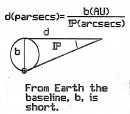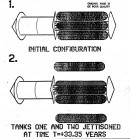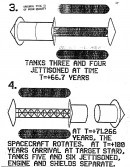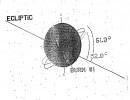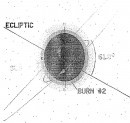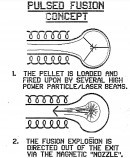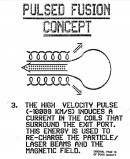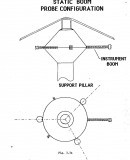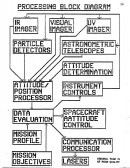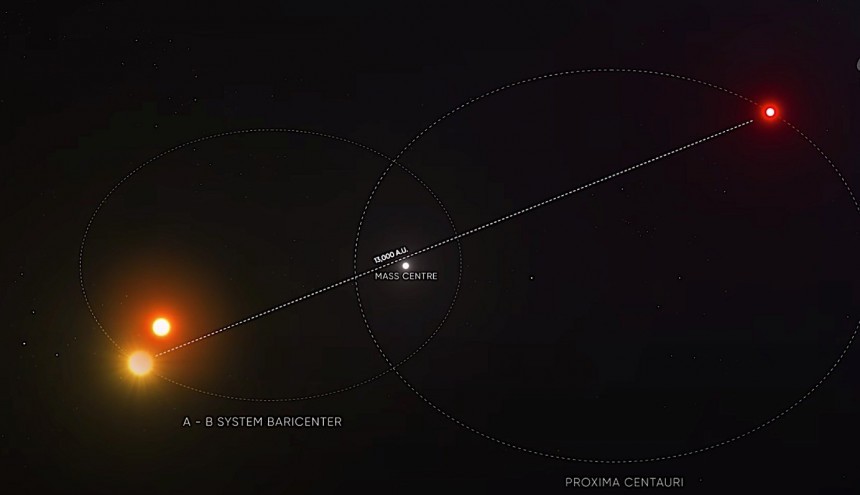For all its merits, humanity’s space exploration industry is yet to produce a single, truly interstellar spacecraft, one with a specific mission in mind. You know, the kind that can leave our solar system, travel the vast expanses beyond at incredible speeds, and centuries later, arrive at its destination, another star system, to study it.
Sure, we do have the Voyagers, Pioneers, and New Horizons, but those were only meant to study our system's outer planets. Yet, a truly interstellar ship not existing doesn’t mean they have not been imagined every now and then. Some have even gotten detailed studies, like America’s nuclear interstellar spaceship design, an idea so outrageous it got a fitting name: Project Longshot.
Longshot was a study conducted by the U.S. Naval Academy and NASA back in the late 1980s. With the Space Shuttle program at its height, people felt inspired, and were looking to travel well beyond our solar system, in search of new wonders.
Well, not travel per se, as Longshot was not a spacecraft meant to carry crew, but a fully autonomous (yes, they were aware of the concept back in the ‘80s) probe. It was supposed to travel to the Alpha Centauri star system, located 4.37 light years from our own Sun, to study its three suns, the Alpha (A), Beta (B), and Proxima.
How far is that? Well, consider the Space Shuttle we mentioned, with its 15,500 mph (28,000 km) orbital speed, would have needed some 190,000 years to get there. The New Horizons, traveling at 36,400 mph (58,500 kph), would need 78,000 years. By comparison, the Longshot should have been capable of making the trip in just... 100 years.
How would that have been possible? The probe would have used a pulsed fission nuclear drive, one that wasn’t available at the time the project was drawn up, but was believed to become available in 30 years or so – that’d be about now, if you think about it, and no such thing is in sight.
The reactor was imagined with an output of 300 kW, and was supposed to power both the pulse drive of the spaceship and its instruments. It would have used liquid potassium fuel, enriched with uranium nitride pellets.
The ship comprised the head, six cylindrical fuel tanks, the central truss, the fission power reactor, and the fusion drive system. The modular components of the Longshot would have been assembled here on Earth, then they would have been launched in orbit, where they could be assembled at Space Station Freedom, the precursor that never came to be of the International Space Station (ISS).
Once ready, the ship would have launched using conventional drives, and once it got far enough, would have ignited its nuclear drive and set off on its mission.
Longshot was envisioned as a 396 tons (873,000 lb) spacecraft, but much of that weight would disappear en route, as fuel got burned, and the fuel tanks got jettisoned: tanks one and two after more than 33 years, three and four after 66 years, five and six after 71 years. At the 71-year mark, the spacecraft would have rotated, and engine and shield would have separated as well.
Once at its destination, Longshot was supposed to enter an elliptical orbit around Beta Centauri and start sending back data from the system. The main things scientists were to look for during the mission: properties of the interstellar medium, characteristics of the Alpha Centauri system, and astrometry.
A series of instruments were believed to be best suited for the mission, namely IR and visual imagers, UV and astrometrical telescopes, high-energy particle detectors, spectrophotometers, magnetometers, and of course lasers for communication. The ship was outlined in such a way as to include three of each, given how there are no rocket scientists so far out to repair hardware if it malfunctions.
Those who dreamed this thing up were planning to have it launched in the first decades of the 21st century. Like many other projects in the space industry, factors conspired to kill Project Longshot long before it was made. Even more disturbing is that, at a time when we should be well on our way to another star system, we’re fighting tooth and nail just to send something around our own Moon.
For a complete look at what a proposal for an interstellar spaceship looked like back in the 1980s, open the PDF attached below. It’s a bit long, but most definitely worth the read.
The video below is a short virtual trip in the Alpha Centauri system, put together by Kosmo.
Longshot was a study conducted by the U.S. Naval Academy and NASA back in the late 1980s. With the Space Shuttle program at its height, people felt inspired, and were looking to travel well beyond our solar system, in search of new wonders.
Well, not travel per se, as Longshot was not a spacecraft meant to carry crew, but a fully autonomous (yes, they were aware of the concept back in the ‘80s) probe. It was supposed to travel to the Alpha Centauri star system, located 4.37 light years from our own Sun, to study its three suns, the Alpha (A), Beta (B), and Proxima.
How far is that? Well, consider the Space Shuttle we mentioned, with its 15,500 mph (28,000 km) orbital speed, would have needed some 190,000 years to get there. The New Horizons, traveling at 36,400 mph (58,500 kph), would need 78,000 years. By comparison, the Longshot should have been capable of making the trip in just... 100 years.
The reactor was imagined with an output of 300 kW, and was supposed to power both the pulse drive of the spaceship and its instruments. It would have used liquid potassium fuel, enriched with uranium nitride pellets.
The ship comprised the head, six cylindrical fuel tanks, the central truss, the fission power reactor, and the fusion drive system. The modular components of the Longshot would have been assembled here on Earth, then they would have been launched in orbit, where they could be assembled at Space Station Freedom, the precursor that never came to be of the International Space Station (ISS).
Once ready, the ship would have launched using conventional drives, and once it got far enough, would have ignited its nuclear drive and set off on its mission.
Once at its destination, Longshot was supposed to enter an elliptical orbit around Beta Centauri and start sending back data from the system. The main things scientists were to look for during the mission: properties of the interstellar medium, characteristics of the Alpha Centauri system, and astrometry.
A series of instruments were believed to be best suited for the mission, namely IR and visual imagers, UV and astrometrical telescopes, high-energy particle detectors, spectrophotometers, magnetometers, and of course lasers for communication. The ship was outlined in such a way as to include three of each, given how there are no rocket scientists so far out to repair hardware if it malfunctions.
Those who dreamed this thing up were planning to have it launched in the first decades of the 21st century. Like many other projects in the space industry, factors conspired to kill Project Longshot long before it was made. Even more disturbing is that, at a time when we should be well on our way to another star system, we’re fighting tooth and nail just to send something around our own Moon.
For a complete look at what a proposal for an interstellar spaceship looked like back in the 1980s, open the PDF attached below. It’s a bit long, but most definitely worth the read.
The video below is a short virtual trip in the Alpha Centauri system, put together by Kosmo.











